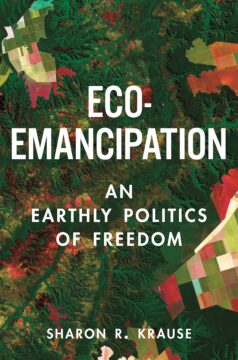Note: I have heard this interview many times over the years. Every time, it strikes me as startlingly fresh and relevant for the time. Even Professor Dawkins admitted that the questions Abbas asked were some of the best he had ever been asked and that he greatly enjoyed the interview himself.
Category: Recommended Reading
The Surprising Ways That Siblings Shape Our Lives
Susan Dominus in The New York Times:
 When we think about the forces that shape us, we inevitably turn to parents. The parent-child relationship is the basis of probably half a millennium’s worth of psychoanalytic conversation and intellectual discourse; parenting books are perennial best sellers, with advice that fluctuates as often as the health advice on what to eat or drink and how much. Their whiplashing instructions don’t stop many parents from reading them, and who can blame those mothers and fathers: Children are baffling, variable, not that verbal — and parents also know that if they get it wrong, their kids will blame them for just about everything.
When we think about the forces that shape us, we inevitably turn to parents. The parent-child relationship is the basis of probably half a millennium’s worth of psychoanalytic conversation and intellectual discourse; parenting books are perennial best sellers, with advice that fluctuates as often as the health advice on what to eat or drink and how much. Their whiplashing instructions don’t stop many parents from reading them, and who can blame those mothers and fathers: Children are baffling, variable, not that verbal — and parents also know that if they get it wrong, their kids will blame them for just about everything.
And yet researchers, after analyzing thousands of twin studies, have come to the conclusion that the shared environment — the environment that siblings have in common, which includes parents — seems to do precious little to make fraternal twins particularly alike in many ways. They can be exposed to the same rules of oboe practice, dinnertime rituals, punishments, family values and parental harmony or discord, and none of it really matters in many key regards — siblings’ personalities may very well end up as different as those of any two strangers on the street. No one would argue that parenting doesn’t matter; it’s just that the choices so many loving parents agonize over — whether to co-sleep or not, whether to enforce the rules rigidly or sometimes let them go — don’t matter nearly as much as we imagine they do. Nor does that mean that genes are all-powerful; it’s just that nurture comprises so much more than parenting — the environmental effects a child is exposed to are vast, and include (just to start) the media they consume and the friends and teachers in whose company they spend most of the day.
And then there are siblings.
More here.
Enjoying the content on 3QD? Help keep us going by donating now.
Tuesday Poem
The Great Circle of Nothing
When I AM THAT I AM made nothing
and rested, which rest it certainly deserved,
night now accompanied day, and man
had his friend in the absence of the woman.
Let there be shadow! Human thinking broke out.
And the universal egg rose, empty,
pale, chill and not yet heavy with matter,
full of un weighable mist, in his hand.
Take the numerical zero, the sphere with nothing in it:
it has to be seen, if you have to see it, standing.
Since the wild animal’s back is now your shoulder,
and since the miracle of not-being is finished,
start then, poet, a song at the edge of it all
to death, to silence, and to what does not return.
by Antonio Machado
from Times Alone
Wesleyan University Press, 1983
Enjoying the content on 3QD? Help keep us going by donating now.
What Can We Learn from Broken Things?
Josh Rothman at The New Yorker:
 There are philosophies of brokenness, which makes sense, given how much broken stuff disrupts the flow of our lives. How should we think about those disruptions? A practitioner of the Japanese ethic of wabi-sabi respects the beauty of brokenness: instead of trying to erase the wear and tear that accrues inevitably with time, she finds ways of acknowledging and celebrating it. In a prototypical example of the philosophy, a teacup that has fallen and shattered is reassembled through the art of kintsugi, in which lacquer, mixed with powdered gold or other metals, is used to fill the cracks; now the fractured, gilded cup tells a story of endurance, authenticity, acceptance, and care amid impermanence. Your favorite jacket, with a mended tear in its lining and the mark of an exploded pen below its pocket, has some wabi-sabi. So does your grandfather’s watch, still functional but with a scratch in its crystal. I like to imagine that the Wabi Sabi Salon, in a town near mine, helps its clients age gracefully. (I’ve never visited.)
There are philosophies of brokenness, which makes sense, given how much broken stuff disrupts the flow of our lives. How should we think about those disruptions? A practitioner of the Japanese ethic of wabi-sabi respects the beauty of brokenness: instead of trying to erase the wear and tear that accrues inevitably with time, she finds ways of acknowledging and celebrating it. In a prototypical example of the philosophy, a teacup that has fallen and shattered is reassembled through the art of kintsugi, in which lacquer, mixed with powdered gold or other metals, is used to fill the cracks; now the fractured, gilded cup tells a story of endurance, authenticity, acceptance, and care amid impermanence. Your favorite jacket, with a mended tear in its lining and the mark of an exploded pen below its pocket, has some wabi-sabi. So does your grandfather’s watch, still functional but with a scratch in its crystal. I like to imagine that the Wabi Sabi Salon, in a town near mine, helps its clients age gracefully. (I’ve never visited.)
The German philosopher Martin Heidegger, who wrote about how we experience ourselves and the world, argued that there were two ways we could relate to objects. A doorknob, he thought, could be “ready-to-hand”—something we reach for and use reflexively, unconsciously, without a moment’s thought. But that same doorknob, if it breaks, can become “present-at-hand”: precisely because it’s not working, we notice it, examine it, try to figure it out so we can fix it. Broken things are often “there” for us in ways that working things aren’t.
more here.
Enjoying the content on 3QD? Help keep us going by donating now.
Monday, May 5, 2025
BBC harnesses AI to create writing classes given by Agatha Christie
Lucy Knight in The Guardian:
 The videos “starring” the author, who died in 1976, have been made using AI-enhanced technology, licensed images and carefully restored audio recordings.
The videos “starring” the author, who died in 1976, have been made using AI-enhanced technology, licensed images and carefully restored audio recordings.
Videos made using a reconstruction of Christie’s voice will share tips on everything from story structure and plot twists to the art of suspense.
The writing advice has been drawn directly from her writings and archival interviews and curated by the leading Christie scholars Dr Mark Aldridge, Michelle Kazmer, Gray Robert Brown and Jamie Bernthal-Hooker.
“We meticulously pieced together Agatha Christie’s own words from her letters, interviews and writings,” Aldridge said. “Witnessing her insights come to life has been a profoundly moving experience.”
More here.
Enjoying the content on 3QD? Help keep us going by donating now.
Human Evolution Traded Fur for Sweat Glands—and Now, Our Wounds Take Longer to Heal Than Those of Other Mammals
Sarah Kuta in Smithsonian Magazine:
 The follicles at the root of each hair contain stem cells, which, in addition to producing hair, can grow new skin when necessary. Since humans have much less hair than other mammals do, it makes sense that our wounds would also take longer to heal.
The follicles at the root of each hair contain stem cells, which, in addition to producing hair, can grow new skin when necessary. Since humans have much less hair than other mammals do, it makes sense that our wounds would also take longer to heal.
“When the epidermis is wounded, as in most kinds of scratches and scrapes, it’s really the hair-follicle stem cells that do the repair,” says Elaine Fuchs, a biologist at Rockefeller University who was not involved with the research, to the New York Times’ Elizabeth Preston.
At some point in the evolutionary journey, humans lost most of their body hair. Since chimps’ wounds heal faster than ours, this shift likely occurred after humans diverged from our shared ancestor with the primates, reports New Scientist’s Chris Simms.
It’s not entirely clear why early humans lost their hair. But it seems our species swapped the once-abundant hair follicles for sweat glands, which are not as efficient at healing wounds but help keep us cool in hot environments.
More here.
Enjoying the content on 3QD? Help keep us going by donating now.
K2-18b and the Search for Life: Exciting Discovery or a False Alarm?
Enjoying the content on 3QD? Help keep us going by donating now.
50 years later, Vietnam’s environment still bears the scars of war – and signals a dark future for Gaza and Ukraine
Pamela McElwee in The Conversation:
 When the Vietnam War finally ended on April 30, 1975, it left behind a landscape scarred with environmental damage. Vast stretches of coastal mangroves, once housing rich stocks of fish and birds, lay in ruins. Forests that had boasted hundreds of species were reduced to dried-out fragments, overgrown with invasive grasses.
When the Vietnam War finally ended on April 30, 1975, it left behind a landscape scarred with environmental damage. Vast stretches of coastal mangroves, once housing rich stocks of fish and birds, lay in ruins. Forests that had boasted hundreds of species were reduced to dried-out fragments, overgrown with invasive grasses.
The term “ecocide” had been coined in the late 1960s to describe the U.S. military’s use of herbicides like Agent Orange and incendiary weapons like napalm to battle guerrilla forces that used jungles and marshes for cover.
Fifty years later, Vietnam’s degraded ecosystems and dioxin-contaminated soils and waters still reflect the long-term ecological consequences of the war. Efforts to restore these damaged landscapes and even to assess the long-term harm have been limited.
As an environmental scientist and anthropologist who has worked in Vietnam since the 1990s, I find the neglect and slow recovery efforts deeply troubling. Although the war spurred new international treaties aimed at protecting the environment during wartime, these efforts failed to compel post-war restoration for Vietnam. Current conflicts in Ukraine and the Middle East show these laws and treaties still aren’t effective.
More here.
Enjoying the content on 3QD? Help keep us going by donating now.
Earth(ly) Matters: Beyond the Human I: Suffering and Respect
Enjoying the content on 3QD? Help keep us going by donating now.
Listening to the Nonhuman World
Jonathan S. Blake at the LARB:
 Bringing nonhumans into our democracies may be less radical than it first appears. Nussbaum is quick to clarify that attending to the political voices of animals does not mean giving them a vote in our elections, which “would quickly become absurd.” Her vision is not of beleaguered pets marching down our grand boulevards demanding the vote for every Sparky, Buddy, and Princess. Rather more modestly, she proposes that “duly qualified animal ‘collaborators’ should be charged with making policy on the animals’ behalf, and bringing challenges to unjust arrangements in the courts.” The goal is not to force animals with “little interest in political participation in the human-dominated world” to suddenly take part in “elections, assemblies, and offices.” Nussbaum’s ambition, rather, is for expert guardians to give the “creatures who live in a place […] a say in how they live.”
Bringing nonhumans into our democracies may be less radical than it first appears. Nussbaum is quick to clarify that attending to the political voices of animals does not mean giving them a vote in our elections, which “would quickly become absurd.” Her vision is not of beleaguered pets marching down our grand boulevards demanding the vote for every Sparky, Buddy, and Princess. Rather more modestly, she proposes that “duly qualified animal ‘collaborators’ should be charged with making policy on the animals’ behalf, and bringing challenges to unjust arrangements in the courts.” The goal is not to force animals with “little interest in political participation in the human-dominated world” to suddenly take part in “elections, assemblies, and offices.” Nussbaum’s ambition, rather, is for expert guardians to give the “creatures who live in a place […] a say in how they live.”
The “creatures” at the heart of her account are individual, often named animals—Virginia the elephant, Lupa the dog. “[T]his is a book about loss and deprivation suffered by individual creatures, each of whom matters,” Nussbaum states. “Species as such do not suffer loss.”
more here.
Enjoying the content on 3QD? Help keep us going by donating now.
‘Marriage feels like a hostage situation, and motherhood a curse’: Japanese author Sayaka Murata
Lisa Allardice in The Guardian:
 From a very young age, Murata never thought of her body as her own. “The grownups would always talk about whether Sayaka had childbearing hips,” she recalls. “It was almost like they were keeping an eye on my uterus, which was something that existed not for me, but for them, for the relatives.” No matter how much she tried to resolve the conflict of motherhood in her fiction, she has never escaped “this idea of being expected to reproduce for the good of the village”.
From a very young age, Murata never thought of her body as her own. “The grownups would always talk about whether Sayaka had childbearing hips,” she recalls. “It was almost like they were keeping an eye on my uterus, which was something that existed not for me, but for them, for the relatives.” No matter how much she tried to resolve the conflict of motherhood in her fiction, she has never escaped “this idea of being expected to reproduce for the good of the village”.
She found erotic magazines hidden in her older brother’s bedroom. “It was all over the place,” she says of the culture at that time; even the manga comics aimed at young girls involved the characters being forced to take their clothes off. “So I didn’t think of sexual love as something that I could choose for myself,” she says. “I always thought of my body as a tool for men to relieve their sexual desires.”
More here.
Enjoying the content on 3QD? Help keep us going by donating now.
Keith McNally’s Rearview Mirror
Rosa Shipley at The Paris Review:
 “Restaurants will break your heart” is something that I often hear myself saying. It has become a mantra. When did I start saying it, I wonder. Maybe it was when I first discovered the criss-crossed lines of affection; falling in a crash-out kind of love with a fellow line cook because he helped me with my mise en place. Maybe it was when my sous-chef first called me mediocre; we all watched slices of chocolate cake I cut pile up in the garbage because of my disappointing quenelles. Maybe it was the first time that I had to fire a kitchen assistant over the phone, hearing him quietly murmur in response, “Okay.” Maybe (definitely) it was the time I got fired—the bad news sandwiched between my manager saying I was “amazing” and also “so great.” Maybe it was the first time I watched a plate of food I made go out and I understood, profoundly, that I would never know who might eat it.
“Restaurants will break your heart” is something that I often hear myself saying. It has become a mantra. When did I start saying it, I wonder. Maybe it was when I first discovered the criss-crossed lines of affection; falling in a crash-out kind of love with a fellow line cook because he helped me with my mise en place. Maybe it was when my sous-chef first called me mediocre; we all watched slices of chocolate cake I cut pile up in the garbage because of my disappointing quenelles. Maybe it was the first time that I had to fire a kitchen assistant over the phone, hearing him quietly murmur in response, “Okay.” Maybe (definitely) it was the time I got fired—the bad news sandwiched between my manager saying I was “amazing” and also “so great.” Maybe it was the first time I watched a plate of food I made go out and I understood, profoundly, that I would never know who might eat it.
In his new memoir, I Regret Almost Everything, Keith McNally’s tells us that his heart has been broken many times over—but it seems that restaurants are, in fact, what have saved him. As a diner, his restaurants have certainly given me much life force and heart-mend; they are perhaps the most accessibly glamorous in New York City, where I grew up.
more here.
Enjoying the content on 3QD? Help keep us going by donating now.
five of the most impactful science stories from the past week
Taking my lead from Abbas, I asked ChatGpt to help. This is what it said:
 1. ESA’s Euclid Telescope Unveils Millions of New Galaxies
1. ESA’s Euclid Telescope Unveils Millions of New Galaxies
The European Space Agency’s Euclid mission released its first major data set, revealing millions of previously unseen galaxies. This “treasure trove” offers new insights into dark matter and the large-scale structure of the universe, marking a significant step forward in cosmology .Smithsonian Magazine
2. CAR-T Therapy Shows 18-Year Cancer Remission
A patient treated with CAR-T cell therapy for neuroblastoma remains cancer-free 18 years later. This long-term success suggests that CAR-T, previously effective mainly for blood cancers, may also be a viable treatment for solid tumors .Science News
3. SpaceX Sets Rocket Reuse Record
SpaceX achieved a new milestone by launching the same Falcon 9 rocket twice within nine days, breaking its previous turnaround record. This rapid reuse capability could significantly reduce the cost and increase the frequency of space missions .UPI
4. Advancements in Insect Imaging Using Synchrotron Technology
Researchers at the Diamond Light Source synchrotron in the UK are employing high-resolution X-ray technology to study insect anatomy in unprecedented detail. This approach is enhancing our understanding of insect evolution and biodiversity, crucial as insect populations face significant declines .Financial Times
5. Private Mission to Venus Aims to Detect Signs of Life
A private space mission, named Morning Star, is set to explore Venus’s atmosphere for potential signs of life. If successful, it would be the first private mission to another planet and could provide valuable data on the planet’s habitability .Science News+1UPI+1
Enjoying the content on 3QD? Help keep us going by donating now.
Sunday, May 4, 2025
Andy Bey (1939 – 2025) Jazz Singer and Pianist
Enjoying the content on 3QD? Help keep us going by donating now.
David Horowitz (1939 – 2025) Political Writer and Activist
Enjoying the content on 3QD? Help keep us going by donating now.
Mike Peters (1959 – 2025) Musician
Enjoying the content on 3QD? Help keep us going by donating now.
A user-friendly opera about Steve Jobs powers up at the Kennedy Center
Michael Brodeur in The Washington Post:
“The (R)evolution of Steve Jobs” doesn’t so much begin as start up. When the first flourish of composer Mason  Bates’s score rings out — a wobbly, synthetic chime of sorts — you’d swear someone had pressed a power button in the orchestra pit. On Friday evening at the Kennedy Center, the Washington National Opera opened its production of Bates’s opera with a libretto by Mark Campbell — its tenth since the opera’s premiere at Santa Fe Opera in 2017. Guest conductor Lidiya Yankovskaya led the Washington National Opera Orchestra and Chorus in this revival of Tomer Zvulun’s production, here directed by Rebecca Herman.
Bates’s score rings out — a wobbly, synthetic chime of sorts — you’d swear someone had pressed a power button in the orchestra pit. On Friday evening at the Kennedy Center, the Washington National Opera opened its production of Bates’s opera with a libretto by Mark Campbell — its tenth since the opera’s premiere at Santa Fe Opera in 2017. Guest conductor Lidiya Yankovskaya led the Washington National Opera Orchestra and Chorus in this revival of Tomer Zvulun’s production, here directed by Rebecca Herman.
The set is an austere arrangement of scaffolding and screens, a versatile scheme that shuttles viewers through time and space: from the humble garage workshop where Jobs and Steve Wozniak first tinkered with their clunky prototypes in the early 1970s, to the depths of Yosemite National Park in the early 1990s, to a tech conference in San Francisco where the iPhone was launched in 2007 — though not necessarily in that order.
More here.
Enjoying the content on 3QD? Help keep us going by donating now.
(Don’t Be Squeamish) The Unlikely Cure for a Gut Disease
Gabriel Weston in Undark Magazine:
 The most immutable fact they teach you in medical school is that anatomy is the absolute bedrock of surgery. As an eager young surgical intern, I often got doused in my patients’ vomit and shit. I tried to see the clinical bright side: Maybe the old man’s feces contained blood or the teen who had barfed up the offending Tylenol would avoid a liver transplant. Otherwise, the contents of normal guts were of less interest.
The most immutable fact they teach you in medical school is that anatomy is the absolute bedrock of surgery. As an eager young surgical intern, I often got doused in my patients’ vomit and shit. I tried to see the clinical bright side: Maybe the old man’s feces contained blood or the teen who had barfed up the offending Tylenol would avoid a liver transplant. Otherwise, the contents of normal guts were of less interest.
Back then, we were taught that the sole purpose of the gastrointestinal tract was to extract nutrients from food. What I didn’t expect, after practicing as a surgeon myself for over 20 years, is that what we think we know about human anatomy is actually changing all the time and that our bodies are more varied, more full of wonders and magical revelations, than we could ever have imagined.
More here.
Enjoying the content on 3QD? Help keep us going by donating now.
On the Brink?
Tariq Ali in Sidecar:
India and Pakistan are preparing for war. The casus belli is, once again, occupied Kashmir. Control over this disputed region has since 1947 been the main obstacle to normalising relations between the two states. On 21 April, a group of Kashmiri militants targeted and killed 26 tourists enjoying the beauty of Pahalgam’s flower-filled meadows, crystal streams and snow-capped mountains; responsibility for the attack was claimed and then quickly disavowed by a little-known organization called the ‘Resistance Front’. This was a particular affront to Narendra Modi (whose record includes presiding, as Chief Minister, over the slaughter of an estimated 2,000 civilians in the 2002 Gujarat massacre, and long a defender of anti-Muslim pogroms). A far-right Hindu nationalist now in his third term as India’s Prime Minister, Modi had previously declared that there was no longer any serious Kashmir problem. His final solution – revoking Kashmir’s autonomous status in 2019 – had succeeded.
Nothing justifies the slaughter of the Pahalgam holidaymakers, and vanishingly few Kashmiri or Indian Muslims would support actions of this sort. But historical context is necessary to understand the overall situation in the province. Even Israel has a Ha’aretz. Not India. Kashmir remains an untouchable subject. This Muslim-majority province has never been allowed to determine its own fate, as promised by Congress leaders at the time of Independence. Instead, it was partitioned between the new republics of India and Pakistan after a short war in which the British commander of the Pakistan Army refused to agree to its use, leaving a ragtag force to face off against India’s regular troops. That well-known pacifist, Mahatma Gandhi, blessed the Indian invasion. Articles 370 and 35A of the Indian Constitution were supposed to guarantee Kashmir’s special status, not least by forbidding non-Kashmiris the right to buy property and settle there. This was combined with brutal repression of any stirrings of discontent, turning Kashmir into a police state with military units never too far away.
More here.
Enjoying the content on 3QD? Help keep us going by donating now.
Intellectual Historians Confront the Present
Leonard Benardo interviews Daniel Steinmetz-Jenkins over at The Ideas Letter:
Leonard Benardo: I thought I would begin by asking you why you think the field of Intellectual History has made such an unanticipated resurgence in recent years. At some point, only a decade or so ago, it was seemingly on the brink of turning moribund, and if you were interested in the area you would have been well advised to go to law school instead. Jobs were scarce. What happened? What were the triggers that reignited the field? How do you account for the turn in terms of structure, ideology, and otherwise?
Daniel Steinmetz-Jenkins: I do think intellectual history has been revitalized but primarily outside the confines of the academy. Of course, there are plenty of great intellectual historians currently writing, but the field has experienced the same fate as the general history profession in terms of the so-called academic jobs crisis that has significantly deepened since 2016. Even if one was to be admitted to Harvard, Yale, or Princeton to study intellectual history, it is probably unlikely that doing so would lead to a tenure-track job. I think there is a hesitancy for professors at even these places to take on students as they know there is a good chance it will not result in a tenure-track offer. Whenever one of my students at Wesleyan says they want to go to grad school to become a history professor, I feel an ethical obligation to explain to them the risk involved in that decision. In terms of your comment about law school, I encourage them to do a PhD/JD so that if a history job doesn’t materialize, they at least have the fallback option of a law career or even becoming a law professor. Of course, some students are privileged enough so as not to have to worry about the risk, which means that we might end up with a profession, in a generation, dominated by a particular class.
More here.
Enjoying the content on 3QD? Help keep us going by donating now.
